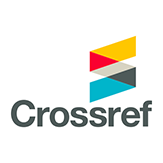Efektivitas Biaya Strategi DOTS Program Tuberkulosis antara Puskesmas dan Rumah Sakit Swasta Kota Depok
Abstract
Keywords
References
(1) Achmad, Asnawi. 2009. Gambaran Persepsi Pasien terhadap Pelayanan Kesehatan di Puskesmas Sukmajaya Kota Depok Tahun 2009. University of Indonesia. [Accessed: 24 April 2018]. Available at: http://lib.ui.ac.id/file?file=digital/125471-S- 5706-Gambaran persepsi-Abstrak.pdf.
(2) Amrita Parida et al.. 2014. Comparison of Directly Observed Treatment Short Course (DOTS) with Self- Administered Therapy in Pulmonary Tuberculosis in Udupi District of Southern India. Journal of Clinical and Diagnostic Research. 8(8): 29–31.
(3) Dianasari, I., Mubasyiroh, R. and Supardi, S. 2017. Hubungan Pengetahuan dan Sikap dengan Kepatuhan Berobat pada Pasien TB Paru yang Rawat Jalan di Jakarta Tahun 2014. Media Penelitian dan Pengembangan Kesehatan. 26(4): 243–248.
(4) Getahun, B. and Nkosi, Z. Z. 2017.‘Is directly observed tuberculosis treatment strategy patient-centered? A mixed method study in Addis Ababa, Ethiopia. PLOS ONE. Edited by M. Pai. Public Library of Science.12(8): 181-205
(5) Johns, B. et al. 2009. An analysis of the costs and treatment success of collaborative arrangements among public and private providers for tuberculosis control in Indonesia. Health Policy. 93(2–3): 214–224.
(6) Katherine Floyd, VK Arora, KJR Murthy, Knut Lönnroth, Neeta Singla, Y Akbar, Matteo Zignol, & M. U. 2011. Cost and cost-effectiveness of PPM-DOTS for tuberculosis control: evidence from India. Bulletin of WHO. World Health Organization, 84 Number 6(June 2006), pp. 425–504. 1 June 2017. .
(7) Laurence, Y. V, Griffiths, U. K. and Vassall, A. 2015. Costs to Health Services and the Patient of Treating Tuberculosis: A Systematic Literature Review. PharmacoEconomics. Springer, 33(9): 939–55.
(8) Lemeshow, S. et al. 1990. adequacy of Sample Size in Health Studies. West Sussex: John Wiley & Sons Ltd. 30 September 2017. .
(9) Mantala, M. J. et al. 2003. Public–private mix DOTS in the Philippines, Tuberculosis. BioMed Central,. 83(1–3): 173–176.
(10) Pantoja, A. et al. 2006. Economic evaluation of public-private mix for tuberculosis care and control, India. Part II. Cost and cost-effectiveness. The International Journal of Tuberculosis and Lung Disease. International Union Against Tuberculosis and Lung Disease. 13 (6): 705–712.
(11) Putri, G. F. and Hisyam. 2014. Hubungan Tingkat Kesembuhan Tuberkulosis Paru Dewasa Dengan Pengobatan Metode DOTS dan Non DOTS di Rumah Sakit Haji Abdoel Madjid Batoe Kabupaten Batanghari Provinsi Jambi Tahun 2011. JKKI. 6(2): 85–94.
(12) Ramaiah, A. A. and Gawde, N. C. 2015a. Economic Evaluation of a Public–Private Mix TB Project in Tamil Nadu, India. Journal of Health Management. SAGE Publications Sage India: New Delhi, India, 17(3): 370–380.
(13) Reviono, R. et al. 2017. The dynamic of tuberculosis case finding in the era of the public–private mix strategy for tuberculosis control in Central Java, Indonesia. Global Health Action. Taylor & Francis, 10(1): 1353777.
(14) Sinanovic, E. and Kumaranayake, L. 2006. Financing and cost-effectiveness analysis of public-private partnerships: provision of tuberculosis treatment in South Africa. Cost Effectiveness and Resource Allocation. 4(1): 11.
(15) Steffen, R. et al. 2010. Patients’ costs and cost-effectiveness of tuberculosis treatment in DOTS and non-DOTS facilities in Rio de Janeiro, Brazil.’ PloS one. Public Library of Science. 5(11): e14014.
(16) Suhariadi, F. et al. 2016. The tale of seeking treatment: A qualitative study of pulmonary tuberculosis patients. Psychology, Community & Health, 5(3): 229–243.
(17) Tarigan, I. and Suryati, T. 2017. Gambaran Out of Pocket pada Awal Era JKN di Indonesia. Ejournal. Litbang.Depkes.Go.Id. 1(2): 141–146.
(18) WHO. 2016. Global Tuberculosis Report 2016. 3 June 2017. .
(19) WHO. 2017. Public-Private Mix for TB Care and Control - A toolkit. 1 June 2017. .
(20) Mahendradhata, Y. et al. 2010. The Incremental Cost-Effectiveness of Engaging Private Practitioners to Refer Tuberculosis Suspects to DOTS Services in Jogjakarta, Indonesia. Am. J. Trop. Med. Hyg. 82(6): 1131–1139.
DOI: 10.7454/eki.v3i1.2321
Refbacks
- There are currently no refbacks.








